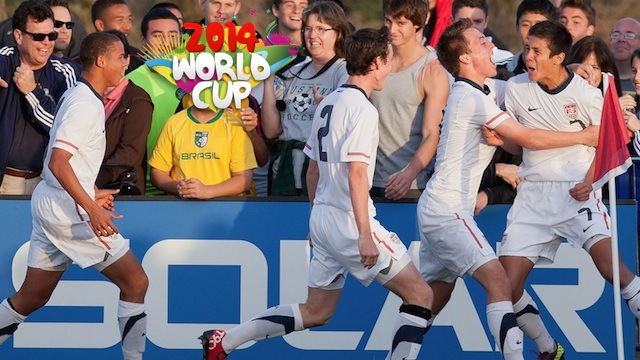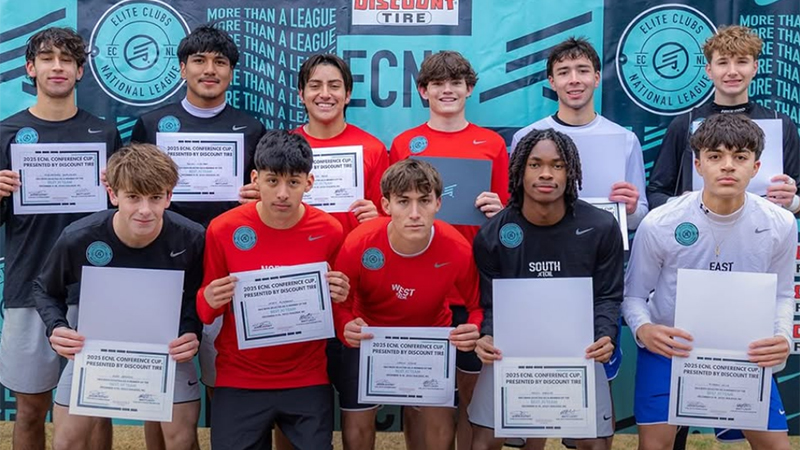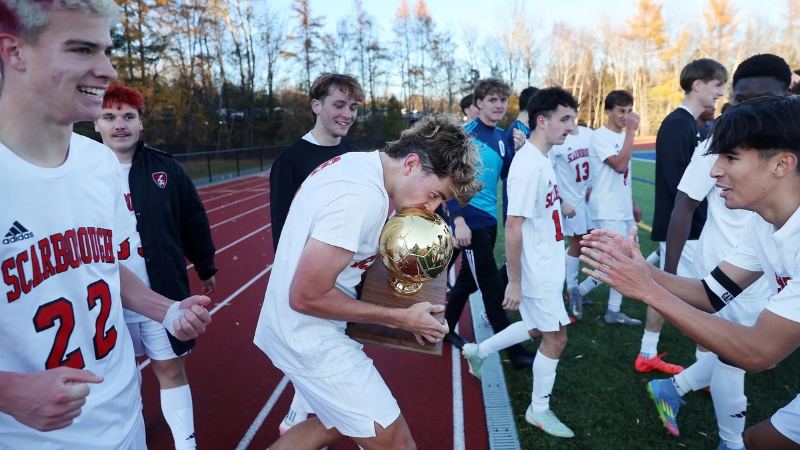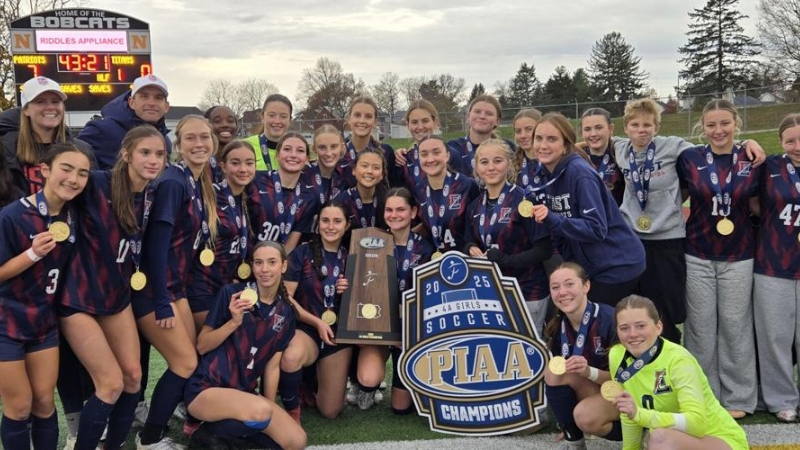Residency fueling the senior MNT?

The U17 Residency program is still here, but for how much longer is anyone’s guess.
The five former residency players on the roster for Brazil were in the program during three of the first four U17 World Cup cycles after its formation in 1999. DaMarcus Beasley and Kyle Beckerman were there for the historic fourth-place finish in 1999. Michael Bradley didn’t make the roster for the 2003 U17 World Cup, but he was in the program at the time. Meanwhile, both Omar Gonzalez and Jozy Altidore were with the team when the U.S. made it to the quarterfinals of the 2005 U17 World Cup.
Since 2005, though, the gate’s closed abruptly. The last residency class to graduate a senior team World Cup player was eight years ago. If the program is judged in large part by both how it performs at U17 World Cups and how it uses those experiences to push players on to the next level, something is short-circuiting.
MORE: Is college still viable for national teamers? | The College Years of the U.S. 23
Things may soon change on that score. The 2009 U17 World Cup side featured Luis Gil and Juan Agudelo, who may yet have a part to play in future World Cups. The 2011 team that featured Kellyn Acosta, Paul Arriola and Alejandro Guido could also have an impact in the future. And then there are skilled players with residency histories like Junior Flores floating around Europe. But there hasn’t been a similarly nimble walk from residency to the national team as players are pulled further and further afield by foreign and domestic academies at younger ages.
Last year, Sunil Gulati said that the residency program “was never meant to be a forever program.” The USSF signed a lease to extend the stay at IMG through the 2015 World Cup, which means the residency program as we know it could soon dissolve, or perhaps shape-shift into something leaner. For now, the program ambles toward Chile 2015 with one of its most successful U17 teams in recent memory. It may also be its last.
At least on this roster, the residency program’s five products fall into three distinct categories: the ‘99ers, the Bradley Era and The Overlap.
The ‘99ers
The USSF didn’t have to wait long for confirmation that residency was a good idea. The group that convened for the 1999 U17 World Cup will always have a special place in U.S. Soccer lore. Never before and never since has an American side finished fourth in a YNT tournament of this stature, and the nucleus of that team - featuring DaMarcus Beasley, Oguchi Onyewu Kyle Beckerman and Landon Donovan - has been an integral part of American soccer for the last 15 years.
Beasley left his home in Fort Wayne, Indiana after his sophomore season to join the program in Bradenton, while Beckerman joined for a year in 1999 before shuttling off to MLS the following year. The legacy of this group is that it matriculated to the professional level phenomenally fast. Within a year of the U17 World Cup, Beasley, Beckerman, Donovan, Bobby Convey and Seth Trembley had all signed professional contracts. The rest of the roster went to college first, but many were soon to follow. If the program was set up to prepare its players for the next level, no class lived the mantra more successfully than the first.
Donovan’s shock omission means Beasley and Beckerman are the lone holdovers from that 1999 New Zealand odyssey, and this is surely their last go at a World Cup. In some ways, Brazil represents the closing of a chapter U.S. Soccer’s been in the process of writing for nearly 15 years.
The Bradley Era
When Michael Bradley showed up in Bradenton in 2002, the program was mired in an uncertain transition period. U.S. Soccer caught lightning in a bottle when their first class ripped through the 1999 U17 World Cup in the fashion it did, which understandably skewed (and heightened) expectations for the following classes. The 2001 U17 World Cup team, which featured Eddie Johnson, Chad Marshall and Mike Magee, lost all three of its group games and bowed out with a whimper. The next cycle would be of prime importance, if for no other reason than merely to show that 1999 team wasn’t a flash in the pan and that residency was worthwhile.
Perceived as slow and underpowered by the staff, Bradley struggled to keep up with classmates better situated to play in the 2003 U17 World Cup. In the end, Bradley didn’t make the roster for Finland. John Ellinger and assistant John Hackworth opted for the midfield of Eddie Gaven, Brian Grazier, John DiRaimondo, Guillermo Gonzalez, Freddy Adu, Corey Ashe and Danny Szetela. Ashe is the only one of that group still playing professionally. Meanwhile, Bradley’s abilities slowly began making themselves evident, and less than two years later he was playing in Europe.
The U17 cycle is difficult for evaluators because the process is often akin to seeding the field in advance of a future harvest. With Bradley, it was impossible for the program to know its impact until Bradley left for the professional ranks. When he did, in 2004, it was obvious the program had a positive effect. To this day Bradley is arguably residency’s most impressive product, and he didn’t even make the World Cup roster. Go figure.
The Overlap
When he arrived in Bradenton in 2004 at the tender age of 14, Altidore was the youngest player in the program’s history (Luis Gil has since matched him on that score). At least geographically, Altidore was an easy sell. He grew up in the southern half of the state in Boca Raton, and at least physically he was able to compete with everyone there almost immediately.
Omar Gonzalez’s overlapping story is a bit more serendipitous. Gonzalez caught USSF’s attention during a Dallas Texans tour of Florida when he was 16, a stint that included an impressive headed goal that the U17 staff caught. Before he returned home to Dallas, Texas, he was offered a spot on the residency roster in the airport. Gonzalez was hesitant, but his mom convinced him to go. Gonzalez arrived just in time to join Altidore, who’d been there for a year already, at the 2005 U17 World Cup.
The two made the U17 roster in time for Peru 2005, and the Americans won two and drew another to run away with a group that included Italy and the Ivory Coast. The quarterfinal finish with a loss to the Netherlands was a respectable way to go, and Gonzalez and Altidore were soon off on different tracks. Gonzalez started his career at Maryland the next year, while Altidore signed a contract with New York Red Bulls.
Altidore and Gonzalez represent the last of residency’s products on this stage. With the program’s future hanging in an uncertain balance, the program waits and watches as the U.S. begins its journey in Brazil.

Headlines
- Recruiting Roundup: December 22-January 4
- How Do I Get Scouted by TopDrawerSoccer?
- 2026 Women's Division I Transfer Tracker
- ECNL Boys Conference Cup Best XI
- Men's College Postseason Top 100 Freshmen
- Vote for Women's College Soccer Best Goal
-
Player Rankings Spotlight: 2027 Boys

- 2026 Women's DI International Signees
- Men's College Postseason Top 100
- Vote for Men's College Soccer Best Goal



